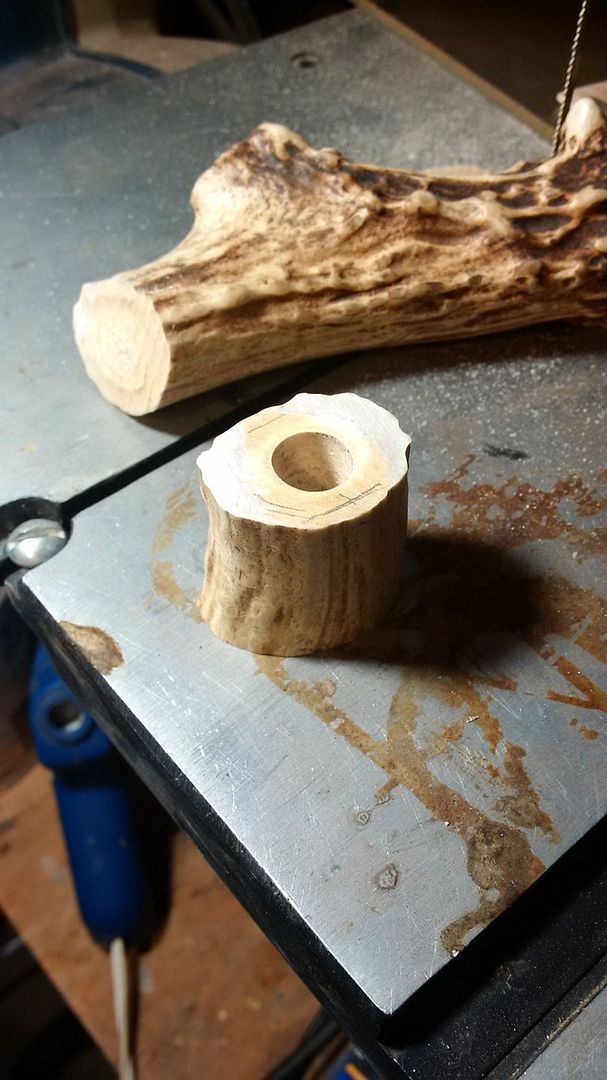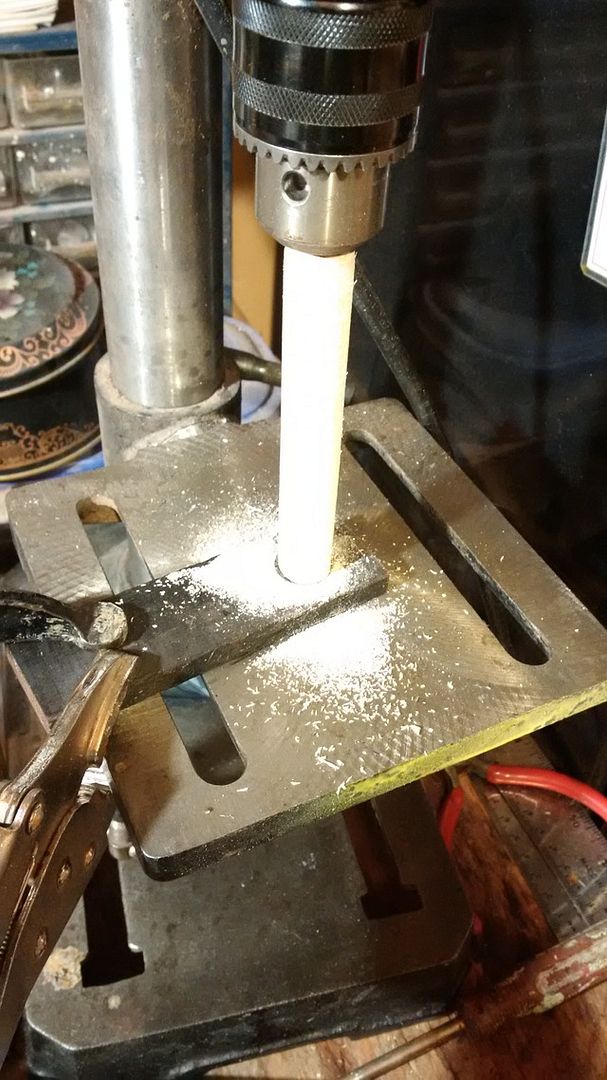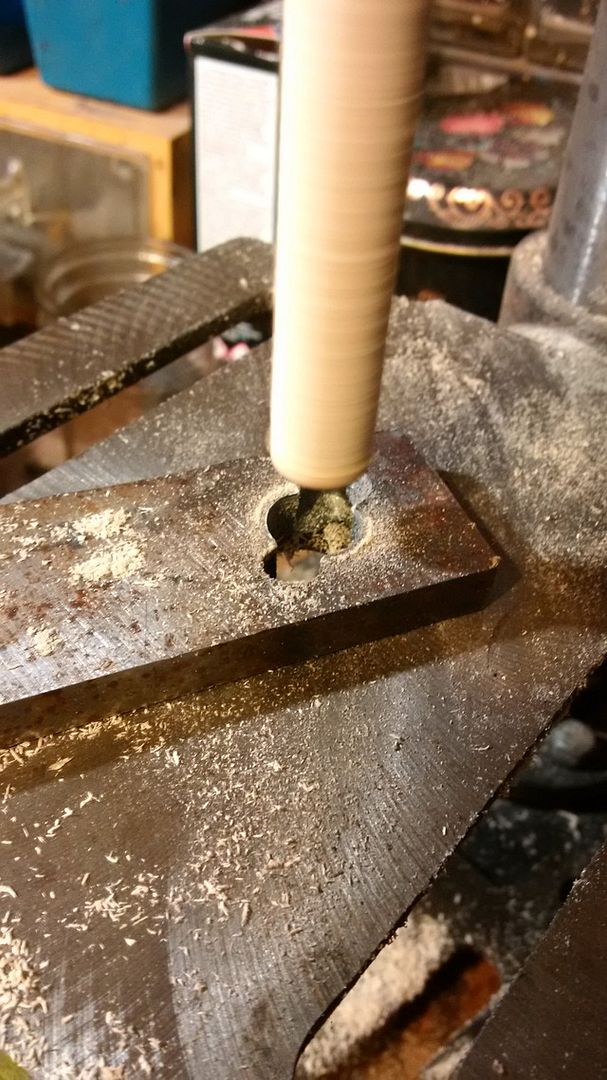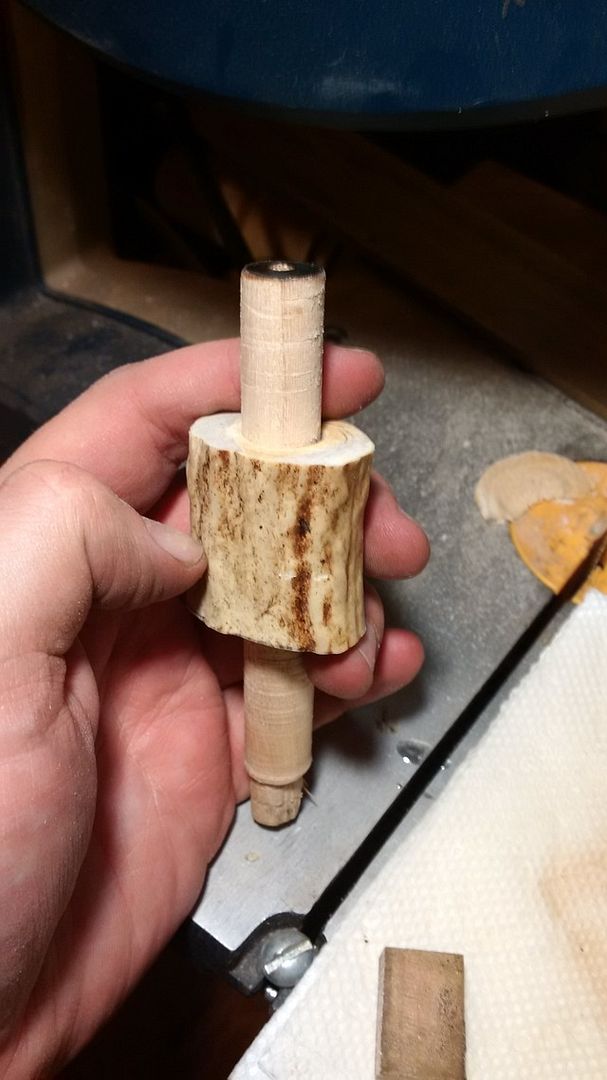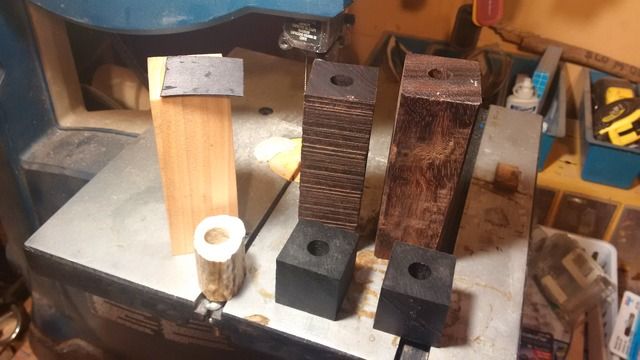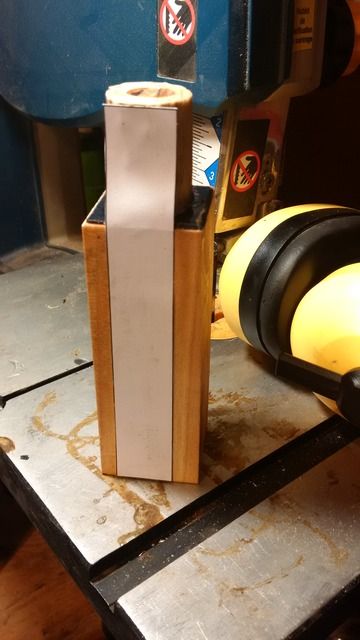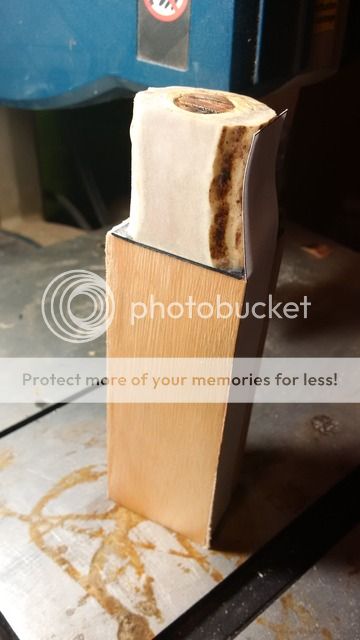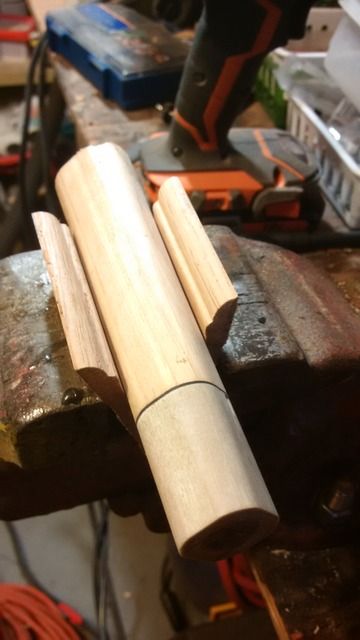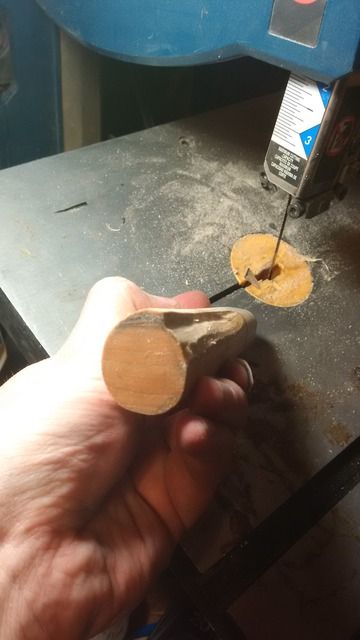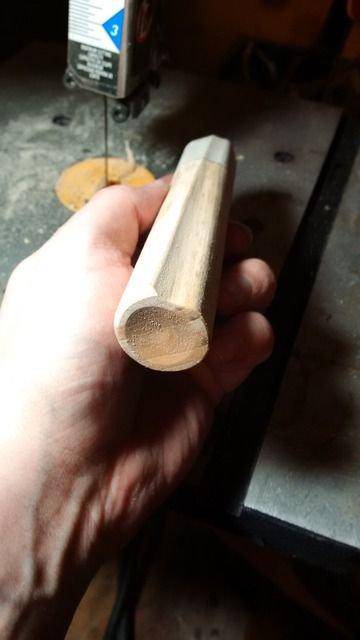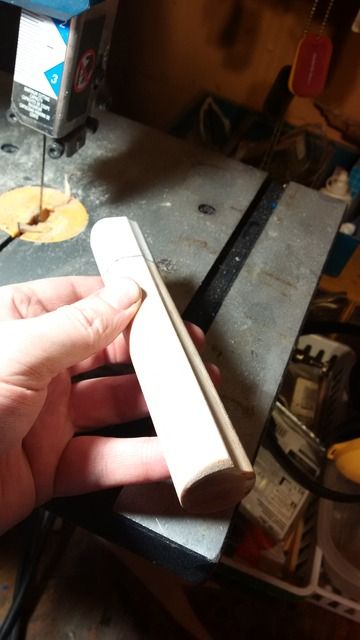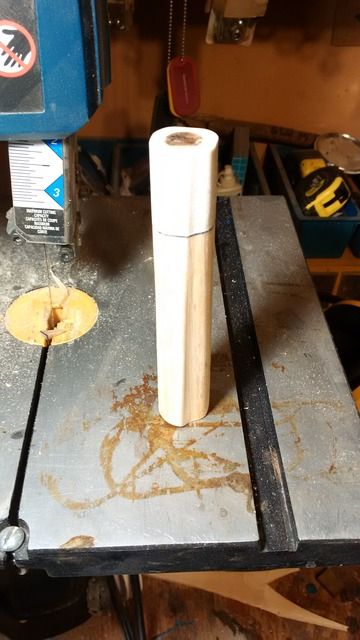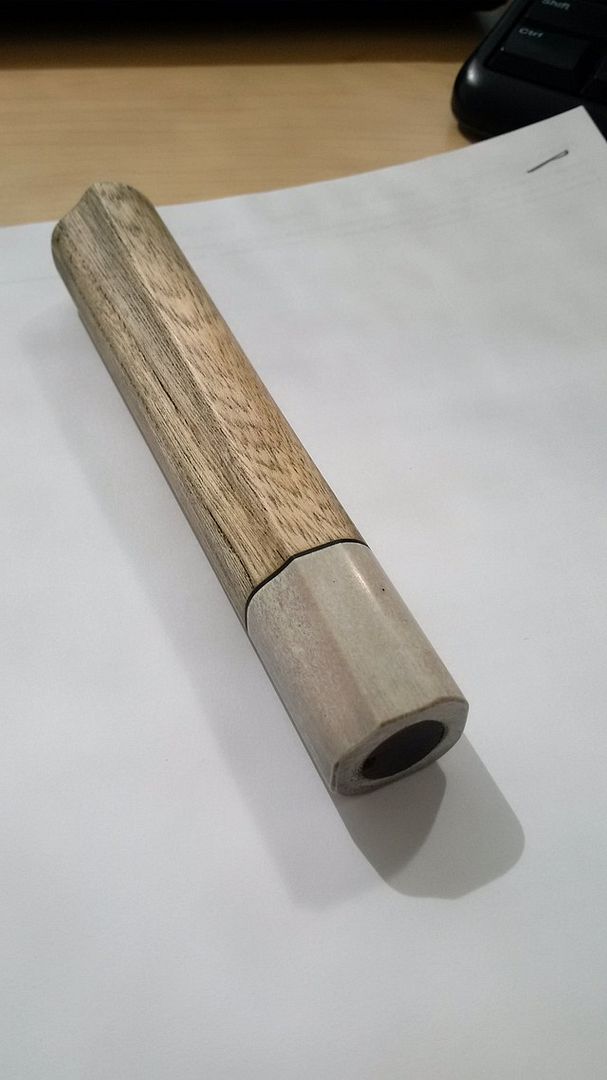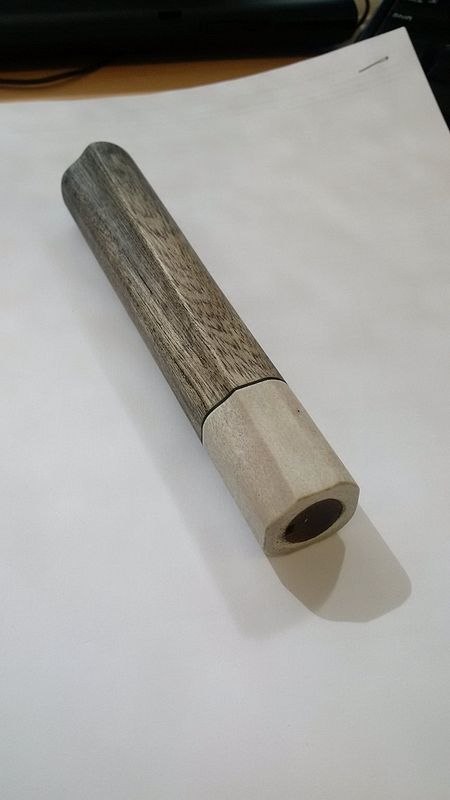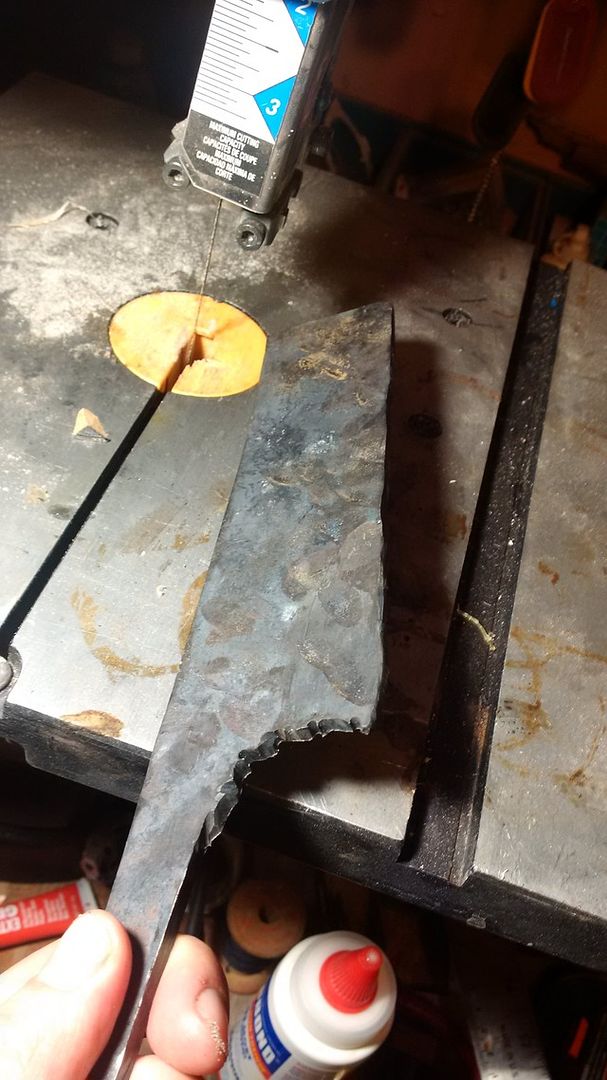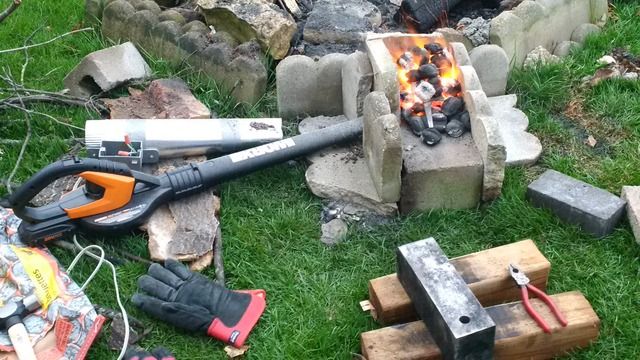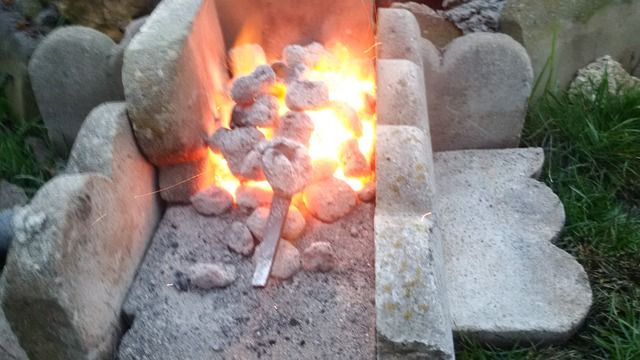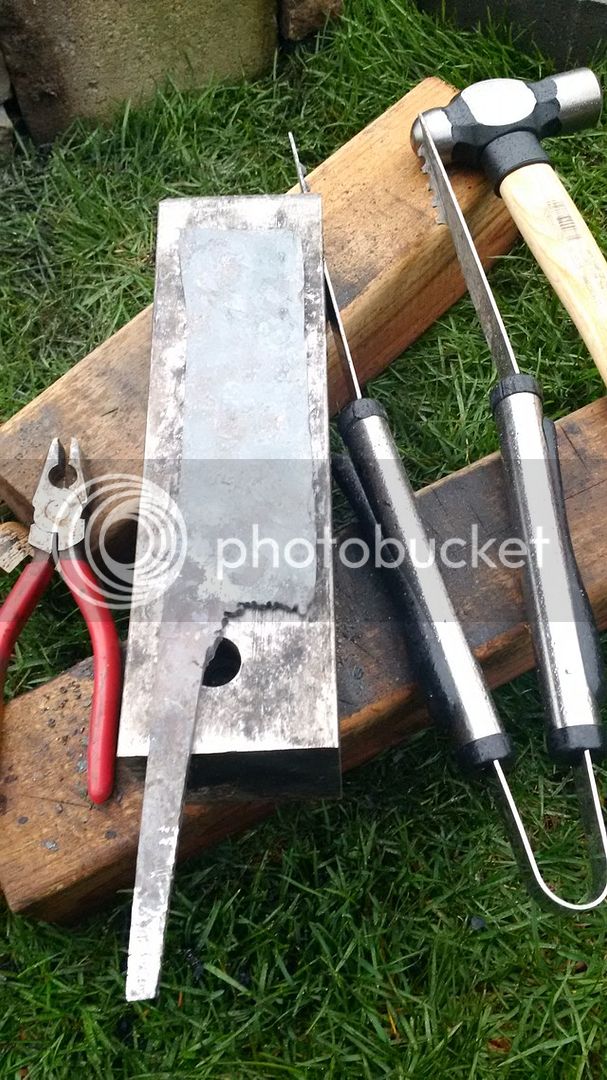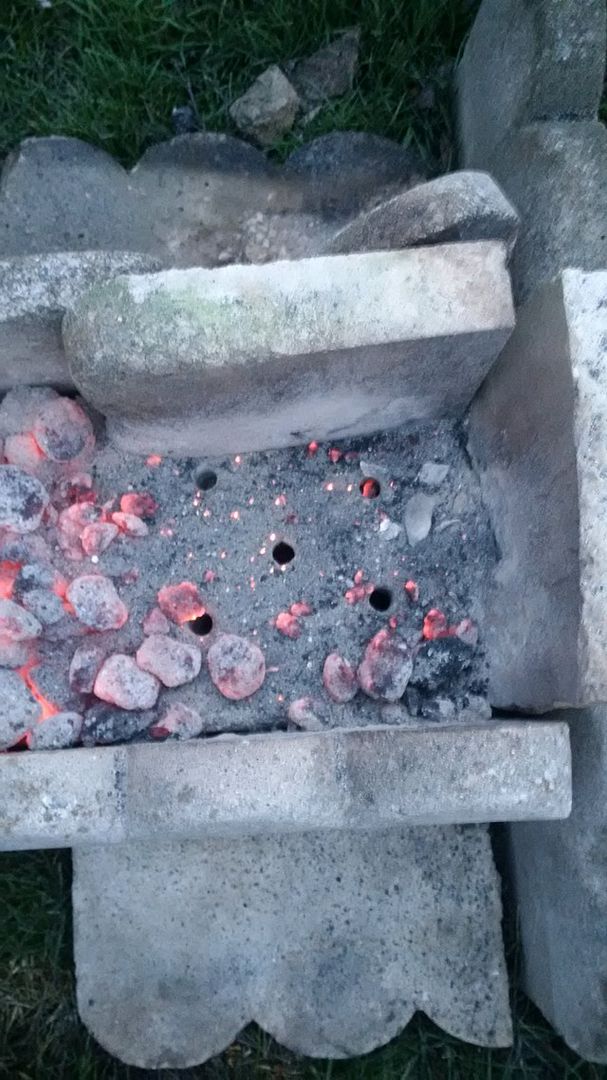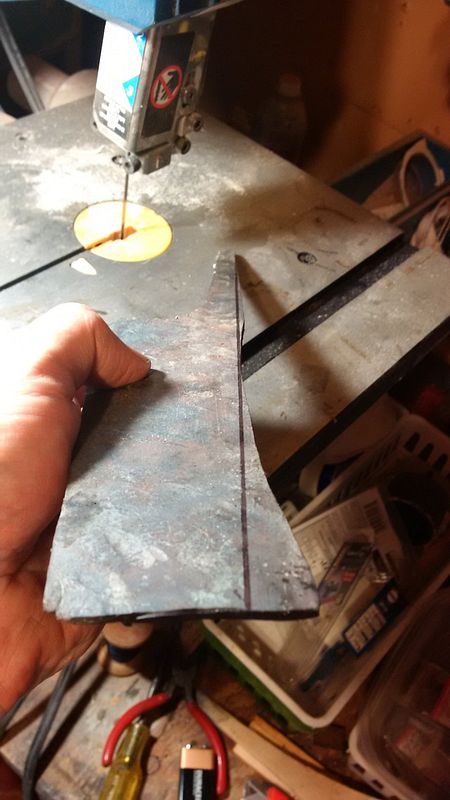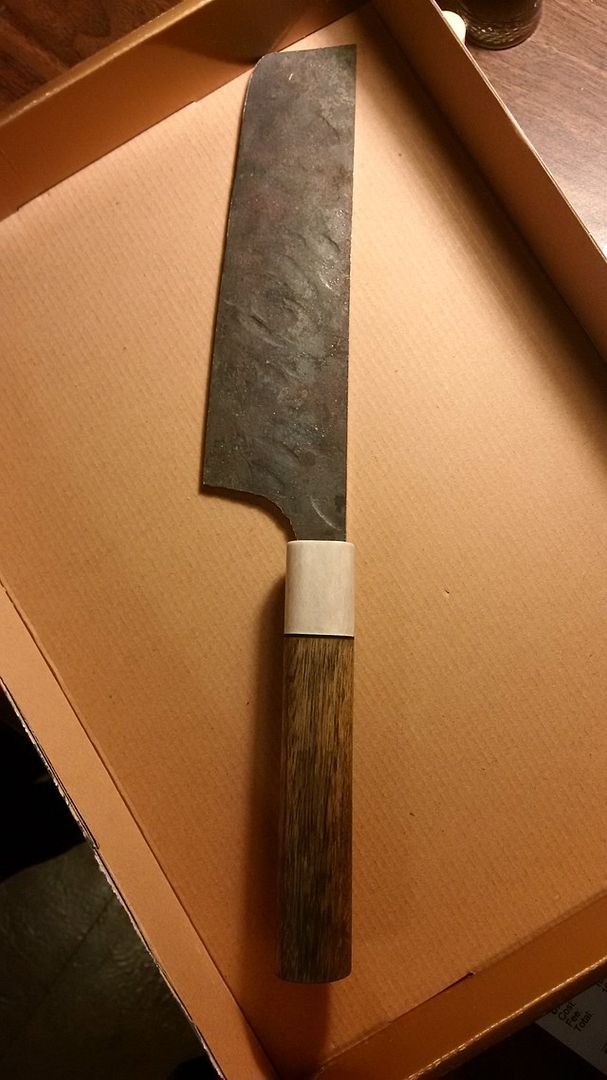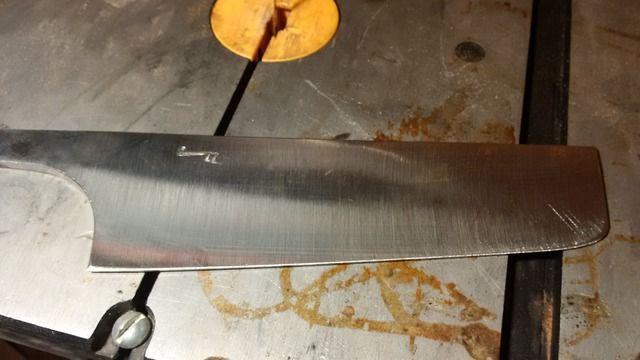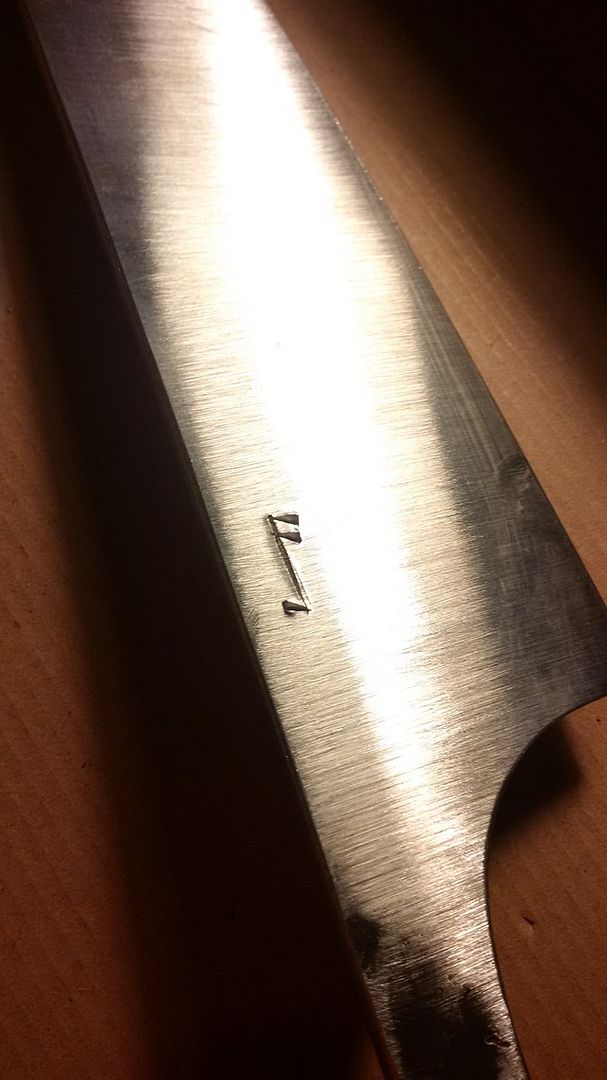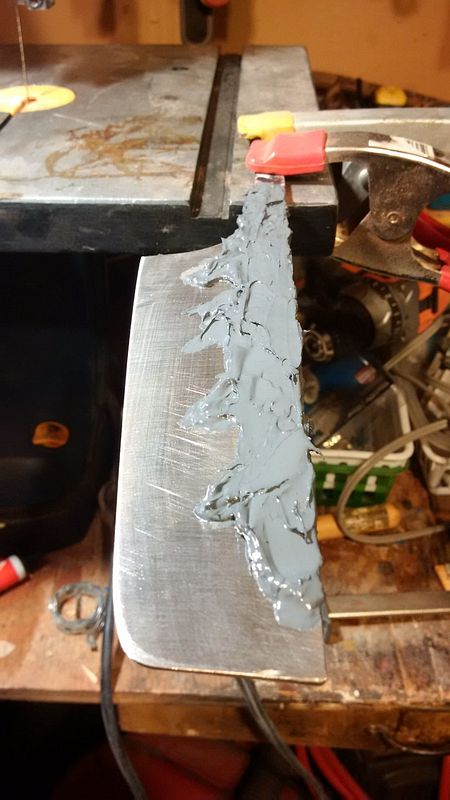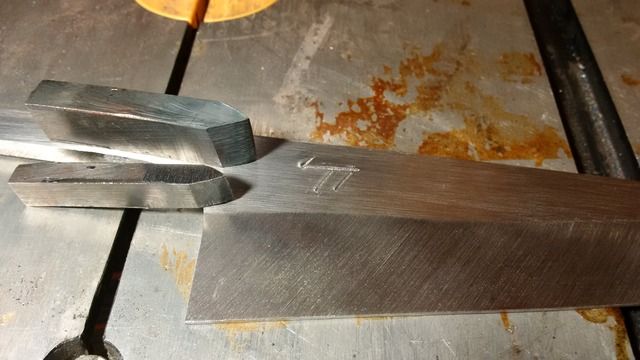jessf
Senior Member
- Joined
- Jan 10, 2016
- Messages
- 869
- Reaction score
- 6
I picked up some 1084 steel, 5/32"x2"x24", and I'm hoping I can get three blades out of it. I'm going to start with the Nakiri, then move on to the Gyuto and if there's enough material left I'll do some variation on a bird's beak paring knife. I'd like to heat treat this on my own this time instead of sending out and I've read that 1084 is good to play around with. I'd also like to try some anvil work, but I'll need an anvil.
I picked up 35lbs of tool steel at the local Metal Supermarkets and I intend on turning this into a small knife smith anvil.
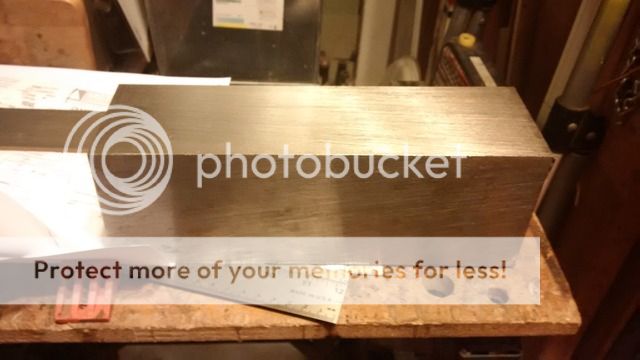
First thing to do is drill a hardy hole which will also serve as a pritchel hole should I ever need one. I drilled a 1/2" hole to a depth of 1.5" and will bore it out to 1". The hole will remain round and will accept any little tools or forms I need to make cut from 1" round stock. I don't really need either the pritchel or the hardy hole for this project, but I'm thinking down the road and I'd like to get as many items added before I heat treat it. I will also cross drill two holes at either end so I can secure the anvil to a large stump or block of wood.
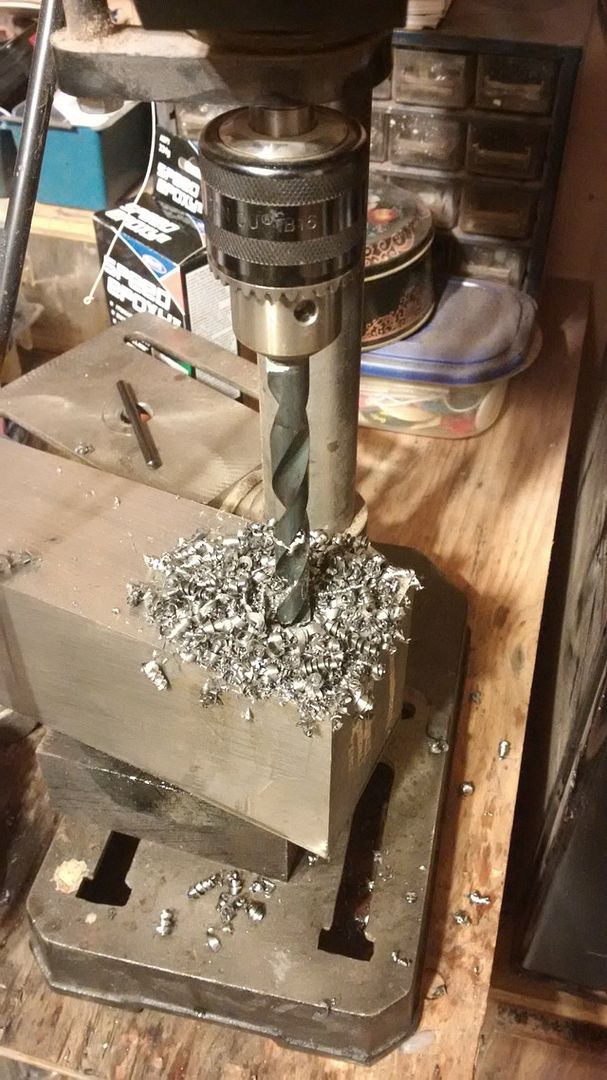
I picked up 35lbs of tool steel at the local Metal Supermarkets and I intend on turning this into a small knife smith anvil.

First thing to do is drill a hardy hole which will also serve as a pritchel hole should I ever need one. I drilled a 1/2" hole to a depth of 1.5" and will bore it out to 1". The hole will remain round and will accept any little tools or forms I need to make cut from 1" round stock. I don't really need either the pritchel or the hardy hole for this project, but I'm thinking down the road and I'd like to get as many items added before I heat treat it. I will also cross drill two holes at either end so I can secure the anvil to a large stump or block of wood.






